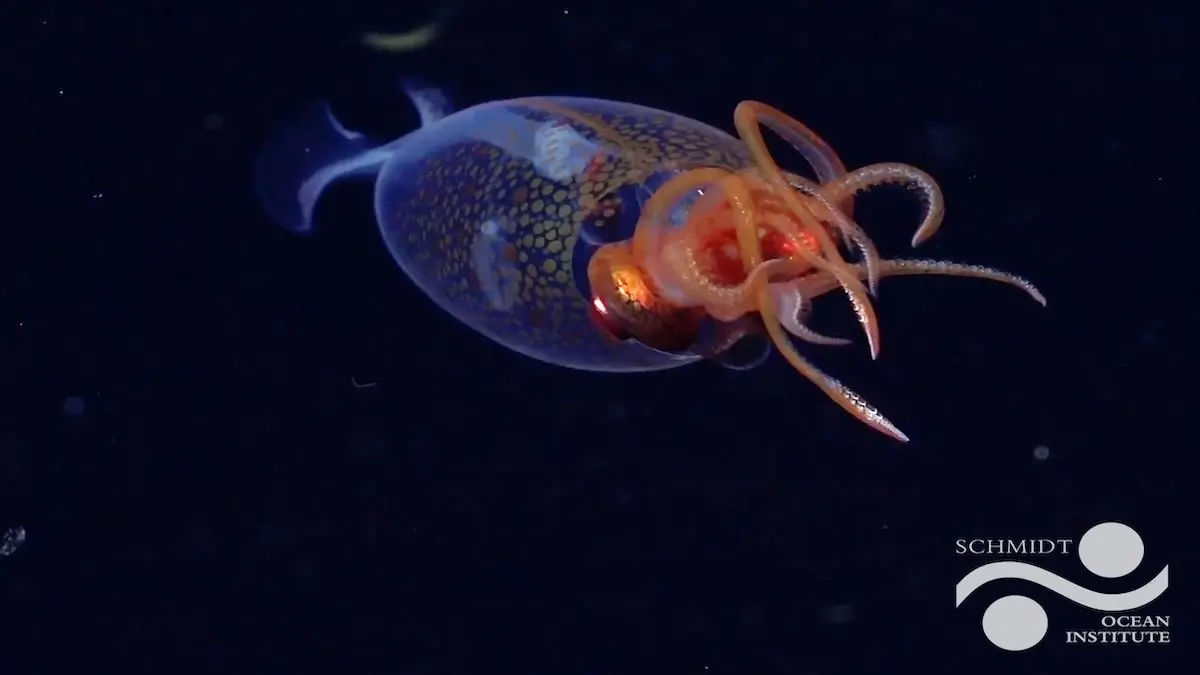Updated 16 April 2025 at 22:33 IST
Colossal Squid, World's Largest Invertebrate, Seen Alive in 100 Years In Deep Sea | Video
Colossal Squid — world’s largest invertebrate — has been captured live on cameras living freely in deep sea.
- Science News
- 2 min read

In a major discovery unearthing deep sea secrets and unexplored Marine life, for the first time a live footage of Colossal Squid — world’s largest invertebrate — has been captured.
Kat Bolstad, a squid researcher at New Zealand’s Auckland University said that this is the first confirmed footage of the colossal squid in the deep sea. The researcher confirmed this development to National Geographic.
According to Schmidt Ocean Institute, this is the first footage of Colossal Squid, Mesonychoteuthis Hamiltoni, living freely in its natural habitat.
The footage was captured at about 600 meters near the South Sandwich Islands as the Schmidt Ocean Institute’s remotely operated vehicle SuBastian descended through the water column on a dive aiming to discover new species in partnership with Ocean Census during the South Sandwich Islands expedition.
Advertisement
The Colossal Squid was filmed last month in March off the Sandwich Islands at a dept of 2000 feet.
It’s reported that squid expert Aaron Evans began hyperventilating due ti excitement after sighting colossal squid for the first time in 100 years.
Advertisement
The Colossal Squid which has been spotted is a young creature. According to marine experts, an adult colossal squid can grow upto 23 feet long and weigh 1100 pounds, making them the world’s largest invertebrate.
The first complete specimen of colossal squid was caught in 2007 off Antarctica coast by a fishing vessel.
Most of the information about the colossal squid has been gathered from the remains found in sperm whale stomachs.
Researchers are of the view that colossal squid’s camera shyness is because they are sensitive to light, therefore, they live so deep in the sea.
The Colossal Squid belongs to the glass squid family. The newborns body appear as transparent but turns opaque as they become adult.
Colossal Squids are targeted by elephant seals or penguins while adults face dangers from sperm whales and sleeper sharks.
Published By : Shashwat Bhandari
Published On: 16 April 2025 at 22:12 IST
